MD Thomas Hemmerich says his business ‘forgot about our strengths’ but, after a substantial reorganisation, the company is again happy to talk positively about the future. By Stephen Briers and John Lewis
After 18 months in the job, during which he implemented a business reorganisation, MAN Truck & Bus UK managing director Thomas Hemmerich is now ready to start talking about his goals for the future.
Hemmerich spent much of those early months getting the team structure to his satisfaction and re-emphasising the need to focus on the basics.
It coincided with a sharp fall in registrations (down year-on-year by 17.6%) and market share (down almost two percentage points at 7.4%).
“We planted the seeds and from 2018 onwards we will reap the rewards,” he tells Commercial Fleet.
That means a boost to truck market share of “at least” one percentage point this year from 2017’s 7.4%. To date (quarter one – publication of truck figures is painfully slow), MAN sits at 8.2%.
But, that’s just the start.
“We deserve to be a double-digit player in the UK,” Hemmerich says. “We lost the script, but we are now increasing customer confidence and getting back onto their shopping lists.”
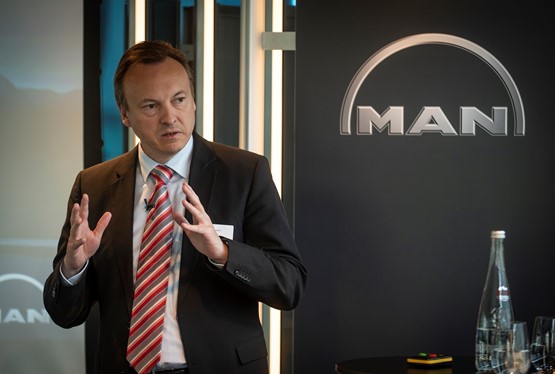
He doesn’t shy away from the fact that MAN’s image took a knock during EGR (exhaust gas recirculation) problems with its Euro V engines, which resulted in reliability issues.
Reliability, he knows, is crucial to a truck fleet.
“We forgot about our strengths, but we are focused on those now,” he says. “The TGX (revisions unveiled at this year’s CV Show; an all-new truck is due within three years) is one of the best portfolios we have regarding quality and total cost of ownership.
“What we need now is to convey the message and to get bums on seats – we have to get drivers and fleets behind the wheel.”
It gives the Volkswagen-owned company a reason to start pushing harder into the market, but Hemmerich sounds a note of caution about relying too heavily on one product.
“We can easily grow the market by changing residual values (RVs) but then you suffer in three years’ time,” he says.
“We have to get the mix right of the sub 16-tonne segment and of bigger trucks. We can’t go too heavily into one sector – we have to protect RVs.”
He is keen to broaden MAN’s customer base, balancing retail business with big fleets, with 18-tonners, tractors and eight-wheelers. Crucial to future success is aftersales support.
“You can build the world’s best truck but customer support is the most important thing,”Hemmerich says.
MAN is piloting a new preventative maintenance project by installing a Microlise box in every truck to check its health 24 hours a day.
Should it identify that the truck is low on oil, for example, it will contact the customer and book it into the nearest centre.
“This will have a huge impact on downtime from unexpected breakdown. We want to be like a control centre where we can detect issues before they happen,” Hemmerich says.
MAN’s new range of SCR (selective catalytic reduction) engines for TGL and TGM will help as they are less complex, more efficient and easier to maintain, as well as being quieter.
But while diesel remains the dominant fuel for now, electric trucks designed for local delivery work will play an increasing role amid growing pressure on operators to cut pollution.
MAN is addressing the zero-emission challenge with a battery-powered version of the 26-tonne TGM, dubbed the eTruck.

Nine eTrucks with a range of around 200km (124 miles) will soon be going on trial in Austria, with talks ongoing with the “Lidls and Aldis of this world”, says Hemmerich.
He adds: “They can be powered up during the 45 minutes they are being loaded and unloaded, so they can run 24/7. This is our test fleet, but we want to start production in early 2021.”
Payload and capacity is no different to the diesel truck, while the drivetrain means the eTruck could go down to 18 tonnes.
At the lighter end of the scale, MAN will offer a TGE-badged variant of VW’s electric Crafter, initially in left-hand drive with right-hand coming in 2020 or 2021.
“Having a van opens up new customers to us. In the past, if they wanted a van, we had to send them to the competition,” Hemmerich says.
“From us, vans are a totally different offering because our workshops are open 24/7, we have our Mobile 24 service, our R&M contracts and financing. LCV customers appreciate the fact we give them instant support.”
MAN is also investigating the potential of platooning and will soon start trials in Germany with logistics group DB Schenker.
Platooning can cut CO2 emissions and fuel consumption by up to 10%, according to MAN global chief executive officer Joachim Drees.
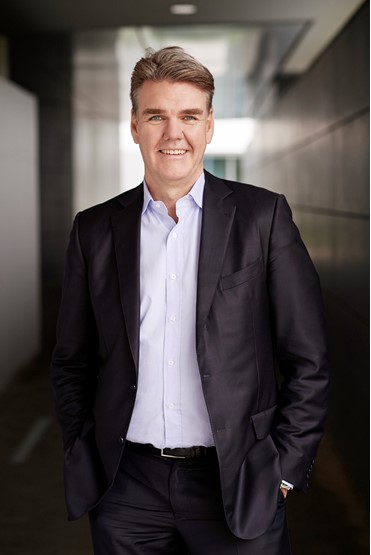
He does not appear to be quite so convinced of the virtues of driverless vehicles and believes that it will be many years before trucks become completely autonomous.
“It might happen on the motorway, but when it comes to urban distribution it’s going to be a lot more difficult to get rid of the driver,” Drees says.
“That said, there are certain confined areas where driverless trucks can be introduced right now, and here I’m thinking about mines and port terminals among other locations.”
The key question, according to Hemmerich, is “when can we do similar trials in the UK?”. For him, technology is not the problem; it’s the legal situation, such as what happens in a fatality – who is liable.
No country has yet provided this clarity.
“This is frustrating because from a technology point of view, manufacturers are faster than the legislators,” he says.
In the meantime, MAN continues to pioneer innovative new safety initiatives, such as its safety truck now in operation in Hessen that autonomously follows machinery used in mobile road works.
Forming part of a project funded by Germany’s Federal Ministry for Economics and Technology, it acts as a shield to protect the workers. If somebody smashes into the back of the truck, it should absorb the impact so the people working ahead of it will remain unscathed.
Digitisation and connectivity are becoming vitally important to truck manufacturers, says Drees, and MAN is no exception.
“We are moving away from being purely a vehicle manufacturer to being a provider of sustainable and intelligent transport solutions,” he says.
Hence Rio, MAN’s cloud-based platform which can accommodate trucks from rival manufacturers and features a variety of apps. They can, for example, assign additional cargo to trucks that are running only partly laden or may be completely empty.
Cutting empty running is essential if transport fleets are to improve their efficiency.
“On average trucks are operating empty for around 33% of the time,” says Drees. “All MAN’s Euro VI trucks have the necessary Rio connection box and it can be retrofitted to older models.
"Together with our sister brand Scania, we have close to 400,000 connected trucks in various markets.”
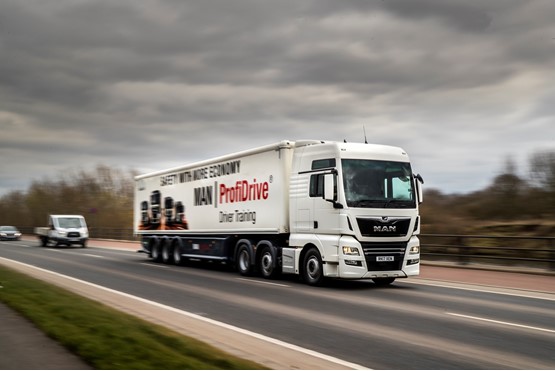
A three-tonner is as low as MAN will go
MAN introduced the TGE 3.5-tonne panel van, based on the Volkswagen Crafter, a year ago but it has been “a harder start than we thought”, according to head of van Stuart Beeton.
That was partly to do with getting the message out into the market, partly to do with volumes limited to front-wheel drive models.
“Our target market, customers running our trucks who are running Sprinters etc., is rear-wheel drive,” Beeton says. “We thought 65% of our volume would be RWD.”
With supply now available, 2018 is looking more positive. Beeton expects to sell 1,000 TGEs this year – 60% panel vans; 40% chassis cab (Luton, tipper or dropside).
Customers are those who “run vans like they run their HGVs” and consider aftersales to be a key part of the relationship; those looking for a box on wheels will go elsewhere.
One surprise has been the proportion of non-MAN customers (around 50% of orders); Beeton had expected the majority to be existing truck customers.
“What they have in common is they want a business solution,” Beeton says.
“Of course, it also gives us an opportunity to sell them some trucks, so it is broadening our customer base.”
By 2021, he anticipates selling 3,500 TGEs a year, with weights ranging from three to 5.5 tonnes.
But, he adds: “We have no plans for anything lower than three tonnes.”

















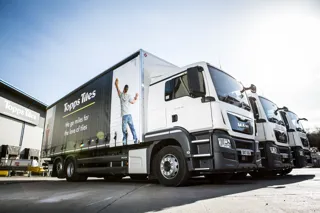
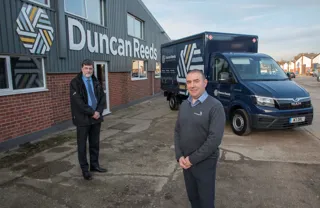
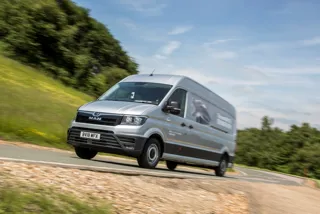
Login to comment
Comments
No comments have been made yet.